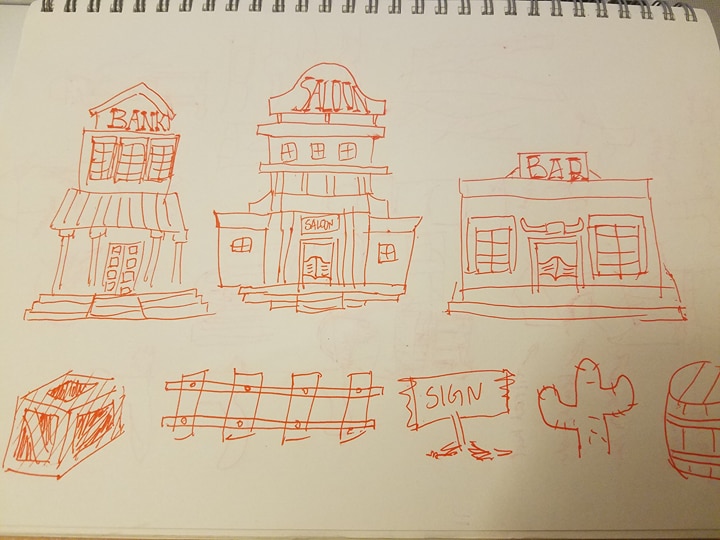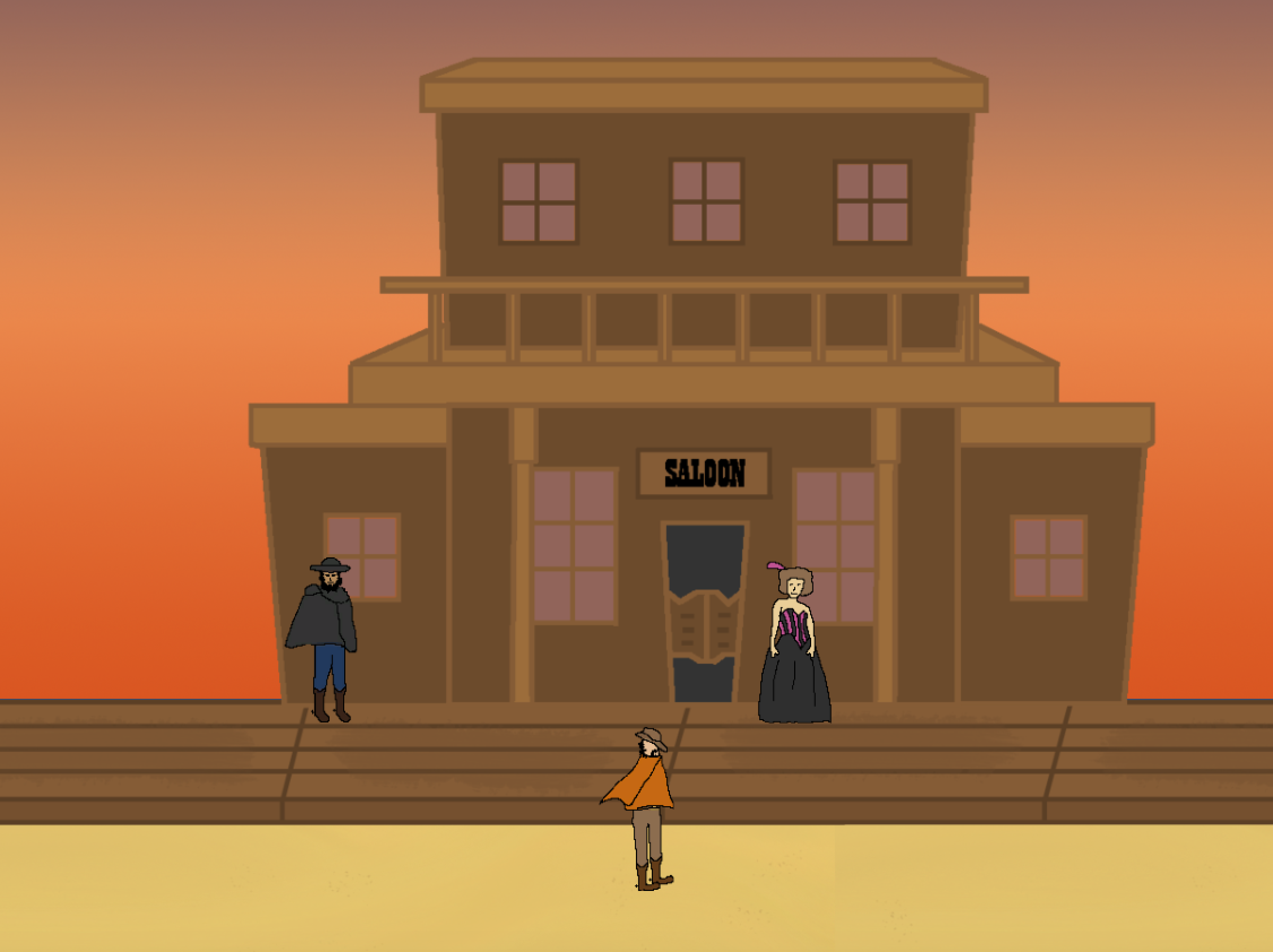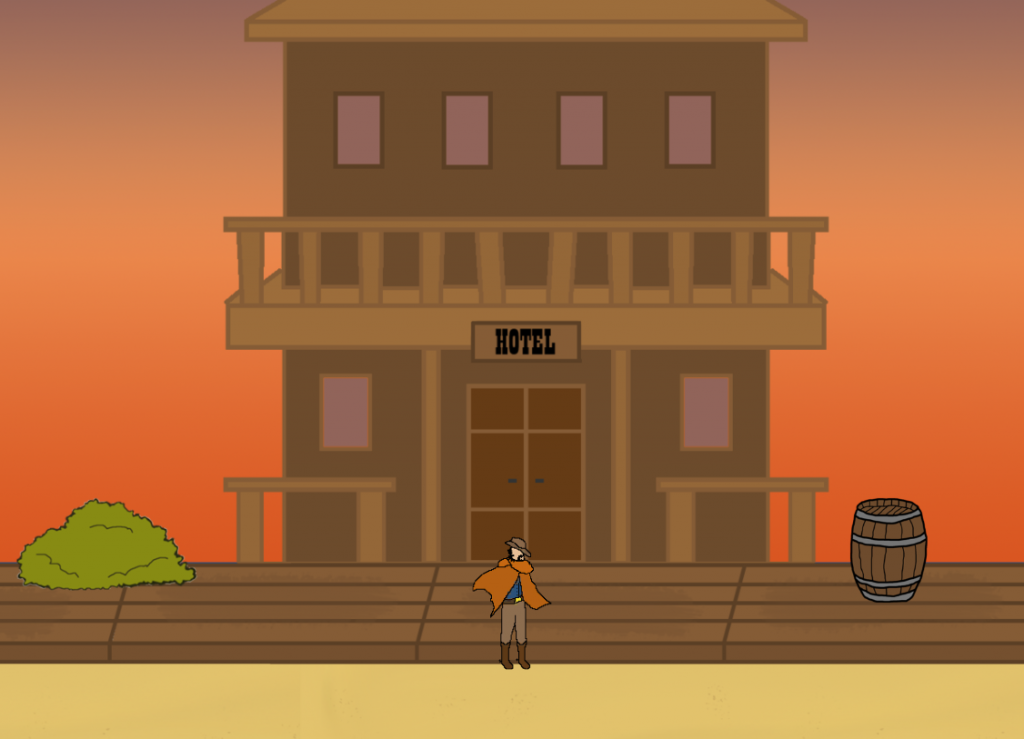
Immersion is an important element in the enjoyment of the game. My radical game attempts to break the immersion of its world without breaking the connection to the game. Deconstructing a medium comes with the risk of damaging the suspension of disbelief that allows the medium to communicate to its audience.
My game is all about deconstruction. I want to deconstruct the idea of “self” by encouraging players to create their own narrative. I want the world to deconstruct itself and the reality it reflects. However, I needed a way to do this without breaking the immersion of the player.
I was inspired by the way Batman Begins adapted its comic source material. A scene in the comic depicts young Bruce going to the movies with his parents. Adapting the scene directly in a movie format would be a problem because the audience is now watching a movie instead of reading. The director decided to change the scene to Bruce going to the opera because they didn’t want to break the immersion by reminding the audience that they’re watching a movie.
The early decision to represent a movie instead of a game was because I knew I was going to breaking the 4th wall in order to communicate my ideas through the medium of a game. My game and its interactions will dance between immersing the player in the narrative and reminding the players that they are in a movie.
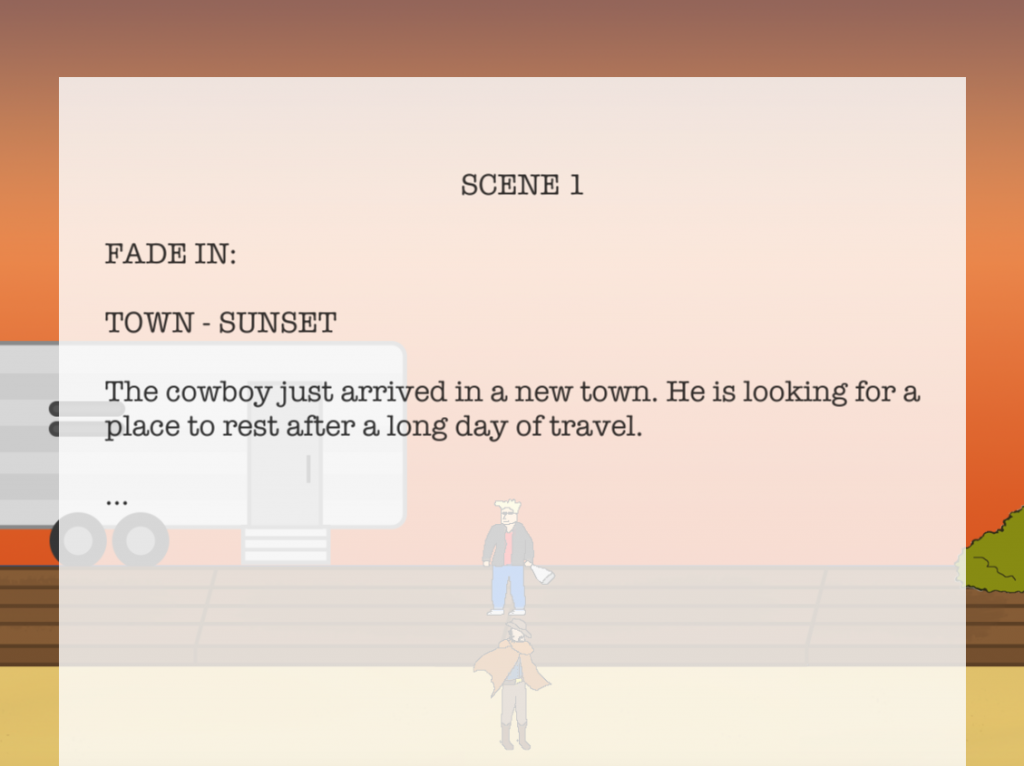
In the beginning of the game, the player is given a script that says the cowboy needs to find a place to stay. The act of “finding a place to stay” is a metaphor for the player choosing a role to inhabit for the duration of the game. They meet three different characters that offer solutions. The action they take will determine the character (type of cowboy) they become.

In the level, the player will encounter props that fall down when they touch it. This interaction helps further communicates to the players that they are on a live movie set. However, the camera never stops rolling and the game/movie continues. As the main triggered animations, the falling props is my way of communicating to the players that they have the power to deconstruct what they see. In the process of that, they regain the power to reconstruct their own identity.
The props falling down is something left to be discovered by the players.

They are disguised as backdrops that does not block the main path. It is possible for players to not trigger props falling down on their first playthrough. This is an element I want to be surprising because I want the discovery to be memorable and possibly thought provoking. From playtesting, I’ve noticed that once players discover that props can be fake and fall down, they try to bump into everything. In term of replicability, I think this interaction will encourage a more exploratory playstyle. Though this is something very simple, it communicates to the players that the game might have more to it than meets the eyes.
Since my last post here, I composed a theme music for my game. I tried to compose something that gives the game a sense of adventure. The music makes the game much more enjoyable. I think the music highlights the enjoyable parts of the game. It encourages players to explore the bright areas and interact with the distinct characters. Through this, players experience the freedom to express oneself through actions.
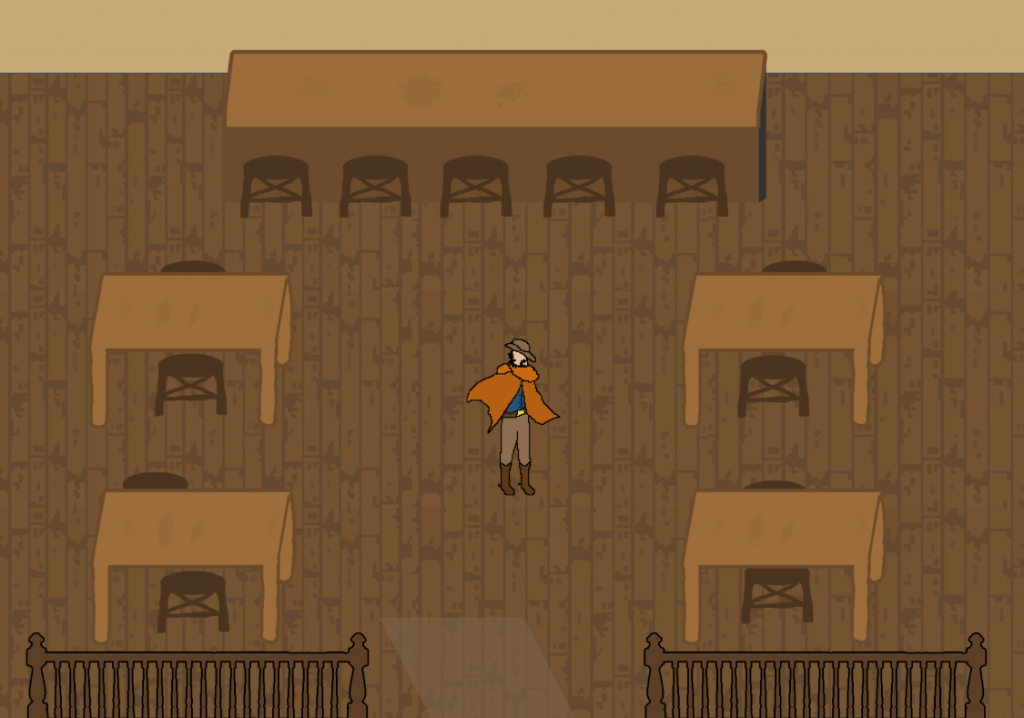
In the middle of the game, the player is given a choice to divert or stay on their story-path. This option is given after they’ve faced the consequences of their first choice of choosing who to trust and where they’re staying for the first night. Their choice will make them realize that their actions will have consequences. It is up to them to decide whether that consequence is desired and if they’d like to change it. This chance to change one’s destiny is central to the theme of my game.
Near the end of the game, many of the options and choices are removed from the players. Instead, they’re faced with singular options that result from the choices they’ve made previously. Perhaps the consequence is undesirable to the player. This last section leaves the player wondering “what if” they had done something different. I think the game is best experienced the second playthrough and this “what if” encourages players to replay the game.
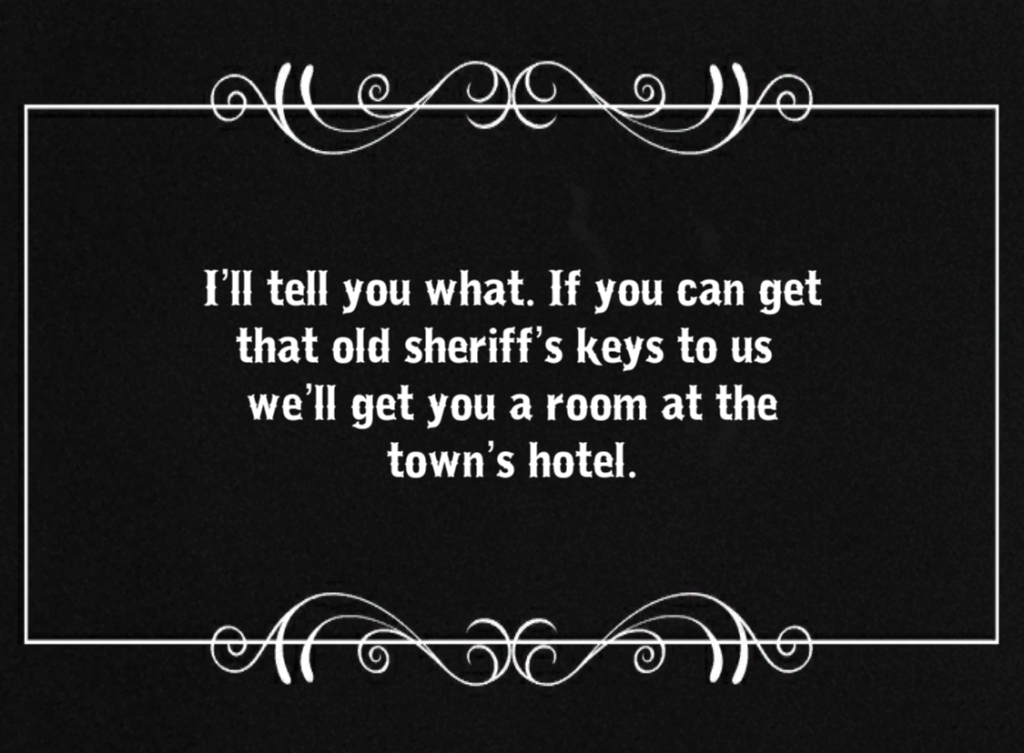
Despite the grueling process of game development, being able to create something meaningful to me is keeping me motivated. I think the idea of being able to watch a movie trailer based on player’s actions at the end of the game is really interesting. It gives players a chance to shift their perspective to that of a passive audience. I won’t be able to implement this idea until the game is fully fleshed out. I’m excited to bring this idea to life.
Through developing my hitbox animations, I know what the ending of my game is going to be. [SPOILER WARNING] Though the narrative ending will vary (3 in total) depend on the decisions the player makes, I need a thematic ending to convey the symbolic aspects of my game. This game is about the construction of identity. Through the script-like narrative progression and the props falling down, the player becomes hyperaware of the construction of the narrative in which they’re creating and experiencing. At the end of the game, I want the player to realize the characters as constructed beings as well. Once the narrative ending finishes, the player character falls forward, revealing the cowboy character as a cardboard prop. Through this, I hope to confuse and surprise the player. This sequence would hopefully make players question not only the game but their own identity as well. Once the player realizes their own identity as a constructed reality, they are empowered to reconstruct their identity. They are free from the “script” of the world and the stereotypical “roles” presented by the media we consume. Outside of the game, the player has control over the actions they take; and through those actions, they create the story they tell the world.
